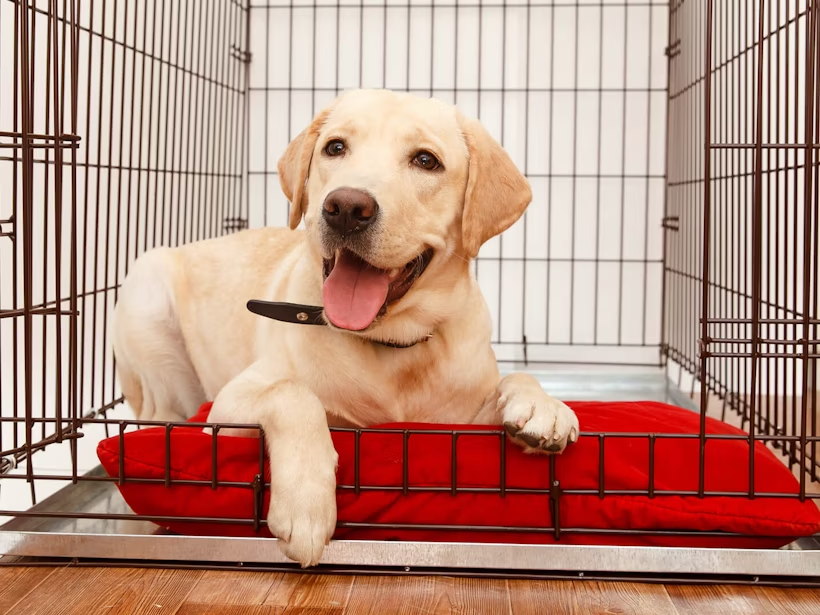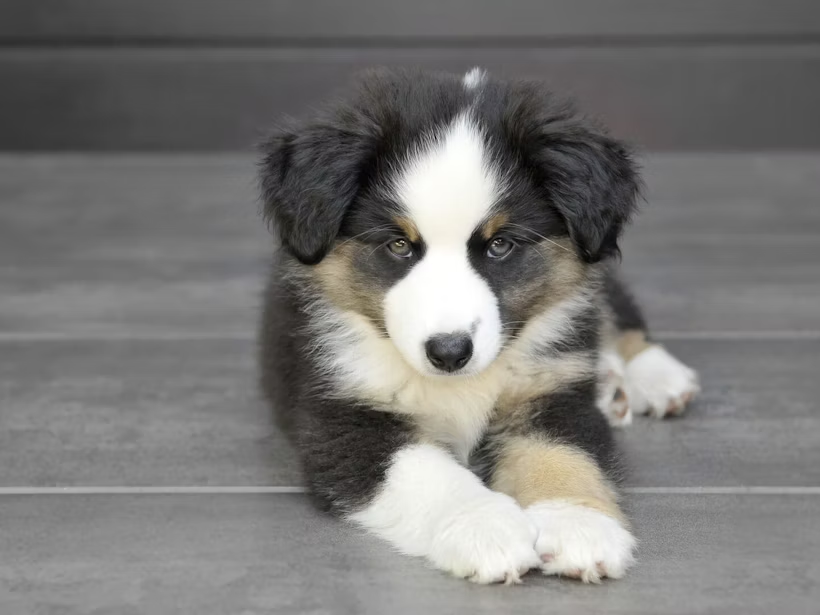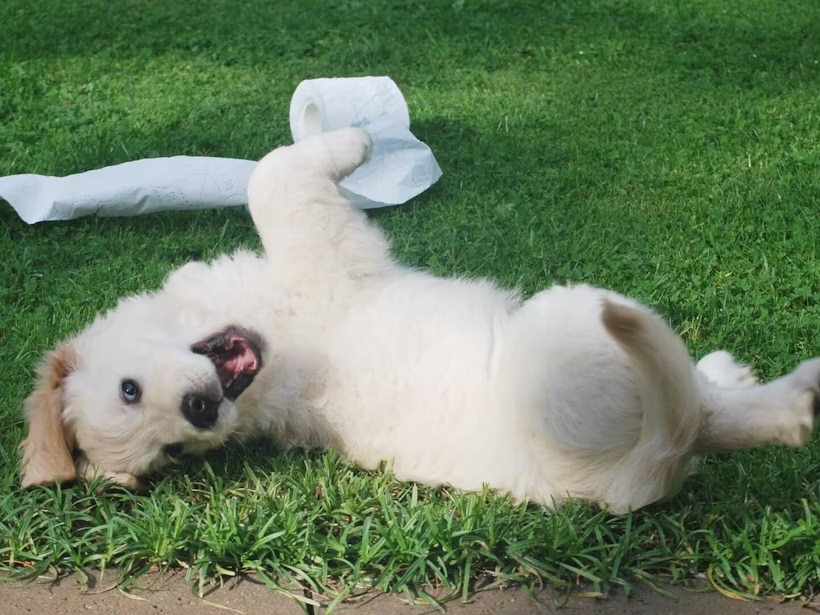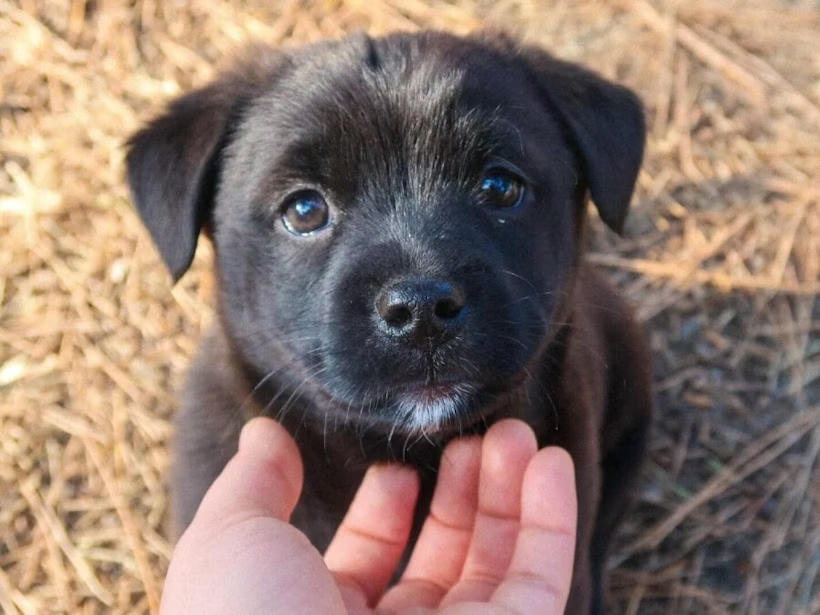As a pet parent, crate training your puppy pays dividends. Besides the primary benefit of keeping both your dog and your possessions safe when you’re not around, crate training:
- Accelerates potty training
- Prepares your dog for boarding and traveling
- Provides a soothing, safe space for your pup
… and more.
If you worry about “locking your puppy in a cage,” rest assured, crates aren’t cruel when used properly. In fact, they can help reduce anxiety because—like most animals—dogs feel more secure in enclosed, den-like spaces. (That’s why many dogs will retreat to their crates during thunderstorms, loud social gatherings, and other potentially overwhelming experiences.)
That said, it’s essential to provide lots of playtime outside of the crate, too!
How long does it take to crate train a puppy?
Teaching your dog to enter (and feel comfortable inside) their crate can take days or months depending on your dog’s personality and your approach. Though we can’t help with the first factor, we created this guide to address the second.
So, if you want to increase your odds of completing crate training quickly, keep reading.
When should you start crate training?
To reap all the benefits we mentioned before, you should start crate training as soon as possible—ideally, when you bring home your puppy. (Old dogs can learn new tricks. It just might take a bit longer.)
Regardless of when you begin, remember that consistency is the key to success. So, plan on multiple crate training sessions every day for the next few weeks.

How to crate train your dog, step-by-step
At its core, crate training is relatively simple. Just follow these steps, take your time, and stay patient.
1. Select the right crate material and size for your pup.
Haven’t purchased your crate yet? There are three main types:
- Enclosed, plastic crates (the kind often used for airplane travel) buffer external stimuli the best. This makes them great for anxiety-prone dogs.
- Wire crates can be good for bigger dogs, and they fold down for easy transport. (If you have an anxious pup, you can cover the crate with a blanket.)
- Fabric or mesh crates are lightweight. But if you have a determined chewer, they may escape. So, we generally don’t recommend these for training.
Regardless of which type you choose, be sure to size the crate appropriately. It should be just large enough for your dog to stand up and turn around. This may mean you need to use a series of progressively larger crates as your pup gets bigger. Alternatively, you can section off part of the crate until your puppy grows into it (this is especially helpful if you have a large or giant breed dog).
Why is size so important? Crate training works because dogs naturally avoid soiling their den or sleeping area (AKA, their crate). But if the crate is too big, your pup may designate part of it as the bathroom.
2. Put the crate in an appropriate place.
If possible, set up your pup’s crate in the living room or somewhere else that you spend a lot of time. Otherwise, your dog may interpret the separation from you as a punishment—and you never want your dog to associate crate time with punishment.
When looking for the right spot, think of the crate as a dog bed. Is the area you’re considering too exposed? Too isolated?
3. Make the crate comfy (if that’s what your dog is into).
Experiment with adding pillows or blankets to your dog’s crate to make it more comfortable. We say experiment because some dogs actually prefer laying on hard surfaces (and they may make a mess on or destroy bedding).
On a related note, make sure your dog’s collar or tags don’t have the potential to snag on the crate door or walls, as this may frighten or even harm your pup.
4. Create rewarding crate experiences.
A surefire way to make crate training effective is to convince your dog that their crate is the best thing ever. You achieve that by associating it with rewards (and never using it for punishment).
Start by opening the crate door and letting your curious puppy explore it. (Make sure the door doesn’t accidentally close and scare them.) When they sniff or go inside the crate, shower them with praise, love, and treats. Soon, they’ll realize interacting with the crate gets them good stuff!
Note: If you have other pets or children, they may be interested in your dog’s crate and the fuss you’re making. Take care that they do not make your pup feel crowded or unsafe in their new crate—especially while they’re getting used to it.
Once your pup seems comfortable around the crate, start encouraging them to go inside by incorporating play—tossing in treats or toys for them to retrieve. At this time, you can also prime the cue or command word (e.g., “crate,” “bed”) by saying it just before you throw the reward into the crate.
You can start feeding meals inside the crate, too. If your pup initially shows resistance to this, work up to it by placing the food bowl nearer and nearer to the crate until you’re able to put it just inside the front and, eventually, toward the back.
5. Progress slowly.
Is your dog regularly eating meals inside the crate? Great! Now you can begin closing the door while they eat, immediately opening it when they finish.
After you’ve done this for several days, add a delay—wait just a few minutes before opening the door (but stay within sight). And each day that follows, increase the post-meal crate time bit by bit until your dog is waiting for at least 10–15 minutes. Then, start leaving the room for a few minutes at a time.
If your pup whines at this, don’t immediately react. They will likely stop after a short while, at which point you can let them out. This might seem counter-intuitive, but letting your dog out of the crate when they whine will reinforce that behavior. (Which you probably don’t want.)
Note: If your puppy seems unreasonably distressed about being left in the crate (e.g., excessively whining or crying, chewing to get out of the crate) or about being left alone in general, this could be a warning sign of separation anxiety. In such a case, please consult your veterinarian before attempting crate training further.
Once your pup is used to longer periods of alone time, you may choose to have them sleep in the crate at night to help with potty training. You can also progress to leaving the house for a walk around the block. Then take a trip to the store. Getting the idea?
Just gradually increase the “challenge” until you reach a level of crate training you’re happy with. But be careful not to task your dog with more than they’re ready for. Set your dog up for success by giving them plenty of potty breaks and following a routine (so they know what to expect).
Puppies’ bladder control increases with age. In general, they should be able to go accident-free for the number of hours that matches their age in months, plus one. So, a 12-week-old puppy should spend no more than four hours in the crate before having a break to potty and play. (Puppies can often wait a bit longer when they’re sleeping, such as at night.)
A crate can be an indispensable tool for keeping your dog out of trouble while you’re gone. But it shouldn’t be where they spend most of their time. Make sure they also get plenty of playtime and stimulation away from the crate to ensure healthy development.
Want more training tips?
Learn how tailoring your training methods to your dog’s breed(s) can make sessions more successful and fun.
Read More


